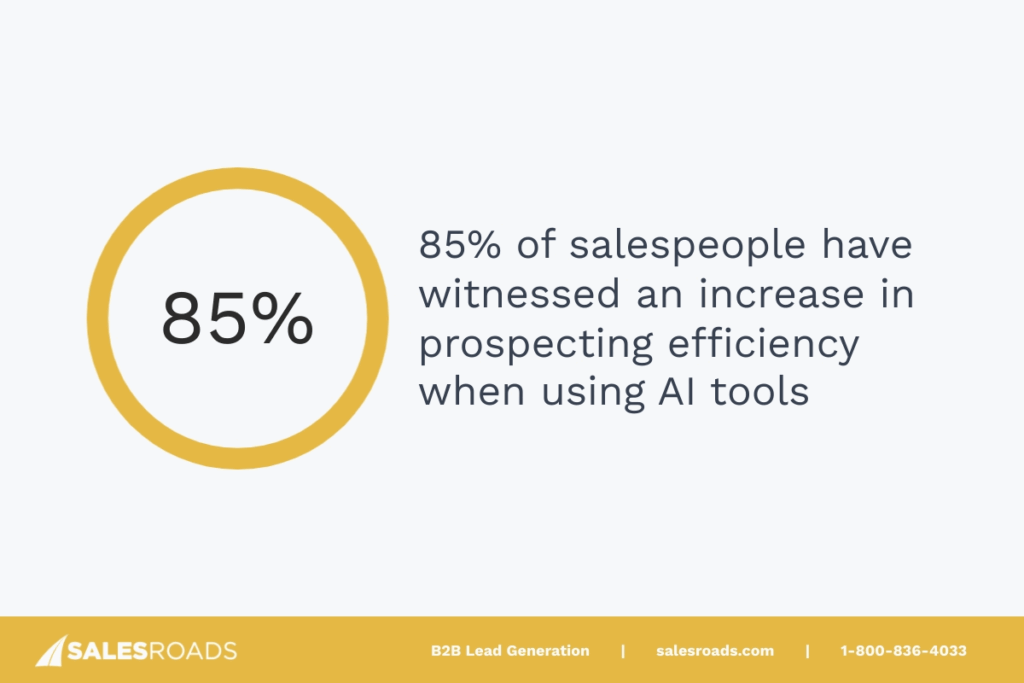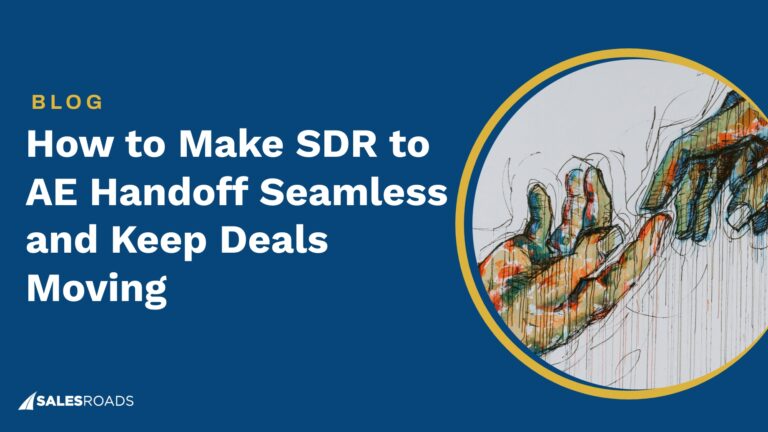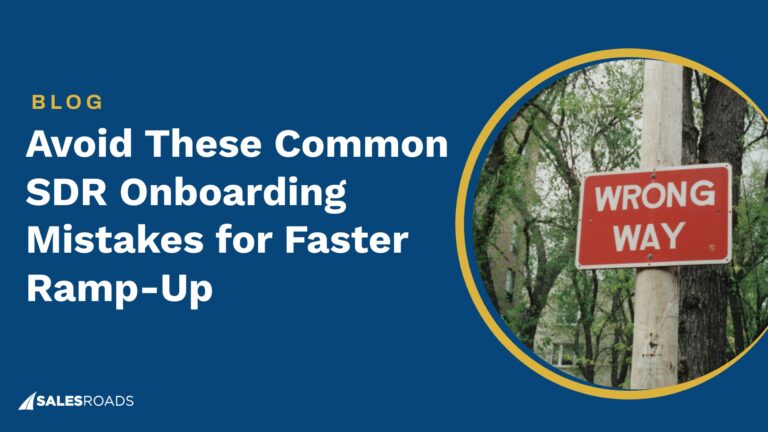Sales reps are the engine that drives your sales pipeline. They’re responsible for identifying prospects, initiating conversations, and qualifying leads before handing them off to Account Executives.
In today’s market, SDR productivity is critical for hitting revenue targets and maintaining a healthy pipeline.
According to research by The Bridge Group, the average annual pipeline value created per SDR is $3 million, making their performance crucial to overall revenue success.

But reps face a unique set of obstacles that can tank their productivity.
They’re juggling high-volume outreach across multiple channels, constantly switching between research and execution, and dealing with rejection rates that would crush most people’s spirits. Add in manual data entry, unclear processes, and the pressure to hit aggressive quotas, and you’ve got a recipe for burnout.
Streamline SDR Workflows for Maximum Efficiency
A cluttered process slows down even the best SDRs. By streamlining workflows, reps can spend less time on repetitive tasks and more time engaging prospects.
With the right tools and structure, efficiency becomes a competitive advantage.
Spot and Eliminate Workflow Bottlenecks
Most SDR productivity issues stem from workflow bottlenecks that eat away at productive selling time. The biggest culprits are manual data entry, unclear handoffs between SDRs and AEs, and slow lead routing processes that create delays and confusion.
For example, the average lead response time takes 47 hours, which represents a massive opportunity for improvement.
Start by mapping out your current SDR workflow from lead assignment to opportunity handoff. Time each step and identify where SDRs are spending disproportionate amounts of time on non-selling activities.
Common red flags include SDRs manually updating lead status across multiple systems, waiting for lead assignment clarification, or spending excessive time researching prospects due to poor data quality.
To address these inefficiencies, implement clear standard operating procedures for every workflow step. Create handoff templates that specify exactly what information needs to be captured before passing a lead to an AE.
Establish service level agreements for lead routing; leads should be assigned within minutes, not hours. Most importantly, regularly audit your workflows and ask SDRs where they’re hitting friction points.
Leverage Automation and CRM Tools
Technology should eliminate repetitive tasks, not create more work. Modern CRMs, sales engagement platforms, and AI-driven tools can automate the mundane activities that drain SDR productivity, freeing them up to focus on high-value relationship building.
According to data, 85% of salespeople have witnessed an increase in prospecting efficiency when using AI tools.

Additionally, 79% have more time to sell, and 72% are finding it easier to build a rapport with their prospects.
Automated follow-up sequences are a game-changer for SDR productivity. Instead of manually tracking when to send the next email or make the next call, engagement platforms can trigger follow-ups based on prospect behavior or predetermined timelines.
This ensures consistent touchpoints without requiring constant mental bandwidth from your SDRs.
Prospect list enrichment through automation is another productivity multiplier. Tools that automatically append contact information, company details, and trigger events to your prospect database eliminate hours of manual research.
When SDRs open a lead record, they should immediately see relevant context like recent news, technology stack, mutual connections without having to hunt for it across multiple platforms.
The key is choosing tools that integrate seamlessly with your existing sales tech stack. Every additional login and platform switch creates friction. Look for solutions that work within your CRM environment and require minimal training to adopt.
Optimize Processes for Scale
What works for a team of 3 SDRs will break when you scale to 15. Process optimization isn’t just about current efficiency; it’s about building workflows that maintain productivity as your team grows.
Documentation is your scalability lifeline.
Every successful process, messaging framework, and workflow should be documented in detail. This includes prospecting methodologies, qualification criteria, objection handling scripts, and handoff procedures. When new SDRs join the team, they should have a comprehensive sales playbook that eliminates guesswork and reduces ramp time.
Standardization prevents productivity loss during growth phases. While individual SDRs may develop their own prospecting styles, core processes should be consistent across the team. This makes it easier to identify what’s working, troubleshoot problems, and maintain quality standards as you add new team members.
Regular process audits become more important as teams scale. What seemed efficient with a small team might create bottlenecks with more people. Schedule quarterly workflow reviews to identify new friction points and optimize processes before they impact team productivity.
Master Time Management to Prioritize Revenue-Driving Activities
SDRs juggle dozens of tasks daily, but not all activities drive pipeline growth.
Effective time management ensures the highest-value actions like prospecting and follow-ups get the attention they deserve, without being buried under admin work.
Time Blocking and Task Prioritization
SDR productivity lives or dies by time management. Without structured time blocking, SDRs default to reactive mode, responding to whatever seems urgent instead of focusing on activities that actually drive revenue.
Implement dedicated prospecting blocks where SDRs focus exclusively on outreach activities. This typically means 2-3 hour blocks for cold calling, email sequences, and social selling. During these blocks, SDRs should avoid checking emails, updating CRM records, or handling administrative tasks. The goal is sustained focus on revenue-generating activities.
Most SDRs have about 3.6 quality conversations (connects) daily, which means maximizing the time available for these high-value interactions is crucial.

Based on internal benchmarks, inbound SDRs can handle on average 15 leads per day, while outbound SDRs need different time allocation strategies.
Separate research and administrative time into distinct blocks. SDRs need time for prospect research, list building, and data hygiene, but these activities shouldn’t interrupt prospecting flow. Schedule research blocks either early in the day or between prospecting sessions, and batch administrative tasks into a single weekly block.
Prioritization within time blocks is equally important. SDRs should prioritize outreach based on lead scoring, deal size potential, and buying signals. High-value prospects get prime time slots when SDRs have peak energy and focus.
Reduce Context Switching
Context switching is a productivity killer that most sales leaders underestimate. Every time an SDR switches from calling to emailing to updating the CRM, they lose mental momentum and need time to refocus.
Batching similar activities is the antidote to context switching chaos. Instead of alternating between calls and emails throughout the day, SDRs should batch all calls into one time block and all emails into another.
This maintains mental flow state and reduces the cognitive load of constantly shifting between different types of activities.
The same principle applies to CRM updates. Rather than updating lead status after every interaction, SDRs should batch CRM maintenance into 15-20 minute blocks. This might seem less organized, but the productivity gains from sustained focus more than compensate for slight delays in data entry.
Communication boundaries are essential for preventing external context switching. Establish specific times when SDRs are available for questions and collaboration, and protect their prospecting blocks from interruptions. This includes email notifications, Slack messages, and impromptu meetings.
Align with the Sales Cycle
Smart SDRs align their time management with natural sales rhythms. This means adjusting activity levels and focus based on quarterly cycles, industry buying patterns, and pipeline needs.
Early in the quarter, SDRs should spend more time on prospecting and filling the pipeline. This is when buyers are typically more receptive to new conversations and when pipeline gaps become apparent. As the quarter progresses, time allocation should shift toward nurturing warm prospects and supporting deal acceleration.
Industry-specific timing matters too. If you’re selling to schools, summer might be dead time for outreach but perfect for research and list building. B2B companies often have budget cycles that impact buying behavior. SDRs who understand these patterns can time their activities for maximum impact.
Pipeline health should drive weekly time allocation. If the pipeline is thin, SDRs need more prospecting time. If there are plenty of opportunities but low conversion rates, time should shift toward qualification and nurturing activities.
Build High-Impact Messaging and Outreach Sequences
Even the most efficient SDR loses ground if the message doesn’t land. Crafting targeted, personalized outreach and aligning sequences to the buyer’s journey helps SDRs break through the noise and book quality meetings.
Craft Targeted Messaging That Speaks to Pain Points
Generic outreach is the enemy of SDR productivity. When messaging doesn’t resonate, SDRs need more touches to generate the same results, which kills efficiency and morale.
For example, a whopping 91.5% of cold outreach emails are ignored, making targeted messaging crucial for breaking through the noise.
Research-backed messaging starts with understanding prospect pain points at a granular level. This goes beyond industry challenges to specific role-based problems. A CFO’s pain points are different from a VP of Sales, even at the same company. SDRs should develop messaging frameworks for each key persona that speak directly to their daily frustrations and goals.
However, personalized approaches can boost conversion rates. Effective messaging also includes social proof relevant to the prospect’s situation.
Instead of broad case studies, reference specific companies or use cases that mirror the prospect’s environment. This builds credibility and helps prospects visualize how your solution applies to their situation.
Personalize at Scale with Data
True personalization at scale requires systematic use of trigger events and data signals. SDRs can’t manually research every prospect, but they can use tools and processes that surface relevant personalization opportunities.
Trigger events are gold mines for personalization. Company news, funding announcements, executive changes, technology implementations, and expansion announcements all create natural conversation starters. SDRs should have alerts set up for key accounts and use tools that surface these triggers automatically.
Technology stack information enables personalization around specific tools and integrations. If a prospect uses Salesforce, SDRs can reference integrations, migration challenges, or optimization opportunities. This level of specificity demonstrates expertise and relevance.
Mutual connections and shared experiences provide powerful personalization angles. SDRs should leverage LinkedIn connections, shared alma maters, or industry associations to create rapport and establish credibility.
The key is building personalization into templates and sequences rather than starting from scratch each time. SDRs should have template frameworks with personalization placeholders that can be quickly customized based on available data.
Align Outreach to Sales Funnel Stages
Different prospects require different messaging approaches based on where they are in the sales funnel. Cookie-cutter sequences ignore this reality and reduce conversion rates.
Cold prospects need awareness-stage messaging that introduces problems they might not recognize. The goal is to generate interest and start a conversation, not to pitch solutions immediately. These messages should be educational and insight-driven rather than product-focused.
Prospects ready for handoff to AEs need transition messaging that sets proper expectations and maintains momentum. This includes clear next steps, relevant stakeholders to include, and preparation materials for upcoming meetings.
Invest in Continuous Coaching and Skills Development
SDRs improve fastest with consistent feedback and skill sharpening. Coaching, role-play, and defined benchmarks create an environment where SDRs not only hit targets but build lasting sales fundamentals.
Define Clear Metrics and Benchmarks
You can’t improve what you don’t measure. SDR productivity improvement requires clear metrics that track both activity levels and outcome quality.
Essential activity metrics include calls made per day, emails sent, social touches, and total prospect interactions. High-performing SDRs make 80+ dials daily and book 12–15 meetings monthly, while it takes 18 or more dials to connect with a prospect by phone.
But activity metrics alone don’t tell the full story. Quality metrics like response rates, meeting booking rates, and conversion rates from lead to opportunity provide insight into SDR effectiveness.
Individual benchmarks should account for experience levels and territory differences. New SDRs need different expectations than seasoned professionals, and enterprise territories typically have different metrics than SMB markets.
Regular performance reviews should combine quantitative metrics with qualitative feedback. Are SDRs hitting activity targets? How do their conversion rates compare to benchmarks? What specific skills need development?
Use Role-Play and Call Reviews
Real-world practice trumps theoretical training every time. Role-playing and call reviews give SDRs safe environments to develop skills and receive specific feedback.
Peer-to-peer role-playing sessions build confidence and expose SDRs to different approaches. SDRs can practice handling common objections, work through discovery questions, and refine their pitch delivery. These sessions should focus on specific scenarios like qualifying budget, handling gatekeepers, or transitioning to demos.
Manager-led call reviews provide expert feedback on real interactions. Review both successful and unsuccessful calls to identify what’s working and what needs improvement.
Focus on specific moments: How did the SDR handle the initial objection? Did they ask effective discovery questions? Was the transition to next steps smooth?
Objection handling deserves special attention in skill development. SDRs should practice responses to common objections until they become natural. This includes budget objections, timing concerns, incumbent vendor satisfaction, and authority questions.
The goal isn’t to script every interaction but to build confidence and competence in handling common situations. SDRs who feel prepared for typical scenarios can focus their mental energy on listening and adapting rather than worrying about what to say next.
Leverage External Coaching Resources
Sometimes internal resources aren’t enough to drive the skill development SDRs need. External coaching resources can supplement internal training and provide specialized expertise.
Outsourcing agencies that specialize in SDR training bring deep experience across multiple industries and company types. They’ve seen what works and what doesn’t at scale, and can often identify blind spots that internal teams miss.
Training platforms and consultants offer structured curriculum development and ongoing skill reinforcement. This is particularly valuable for companies that lack internal training resources or need to rapidly scale SDR capabilities.
External support makes the most sense when internal teams lack specific expertise, when rapid improvement is required, or when SDR turnover has created knowledge gaps. The key is choosing partners who understand your market, integrate well with internal processes, and focus on practical skill development rather than theoretical concepts.
Bottom Line
SDR productivity isn’t about working harder; it’s about working smarter.
The most successful sales organizations focus on removing friction from SDR workflows, providing clear guidance on time management, enabling effective messaging at scale, investing in continuous skill development, and strategically leveraging external support when it makes sense.
Start with workflow optimization and time management fundamentals before moving to advanced strategies like external support.
Small improvements compound over time, and a systematic approach to SDR productivity will deliver sustainable results that benefit your entire revenue organization.
When SDRs can operate efficiently without burning out, everyone wins: SDRs feel more successful, prospects receive better experiences, and companies hit their revenue targets more consistently.











